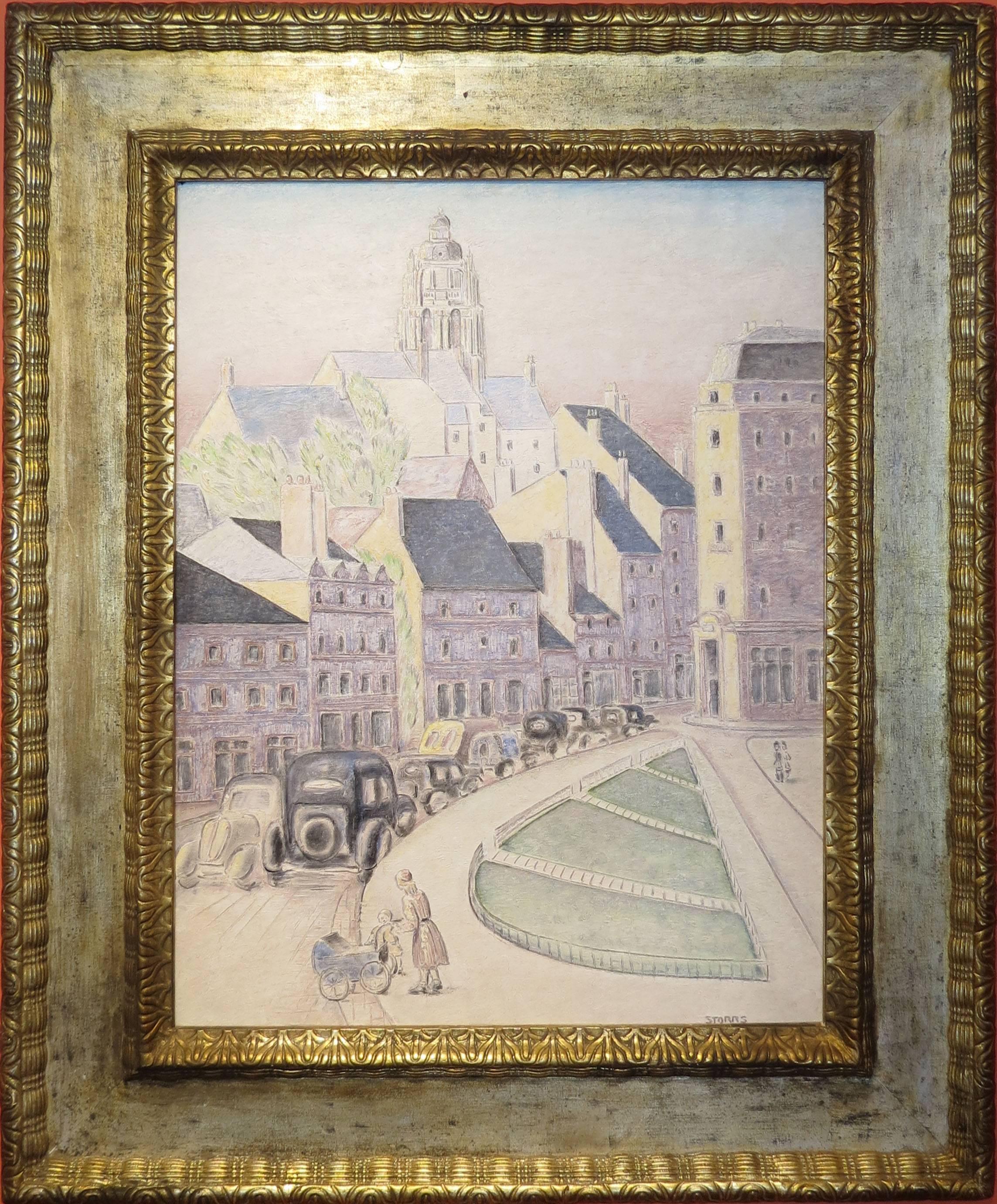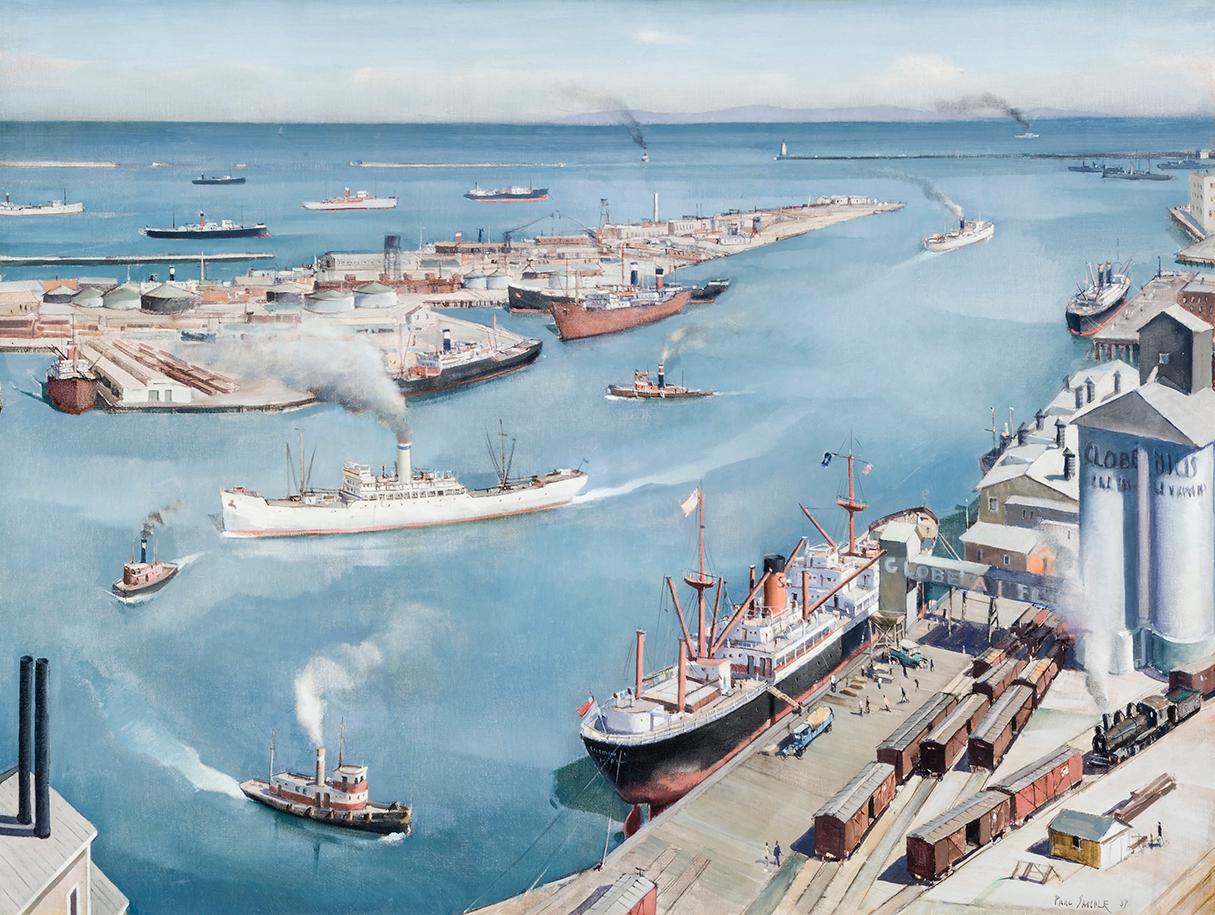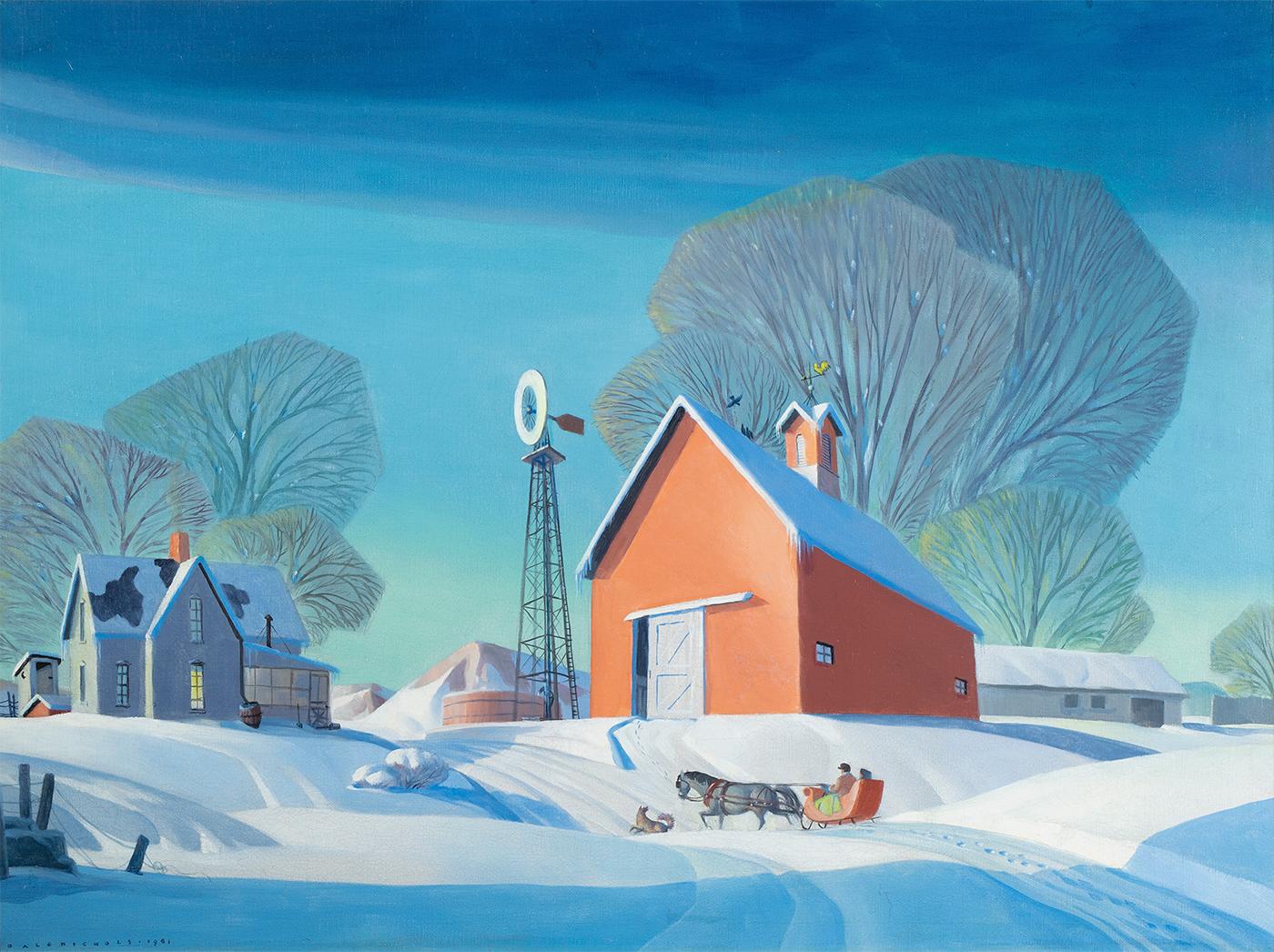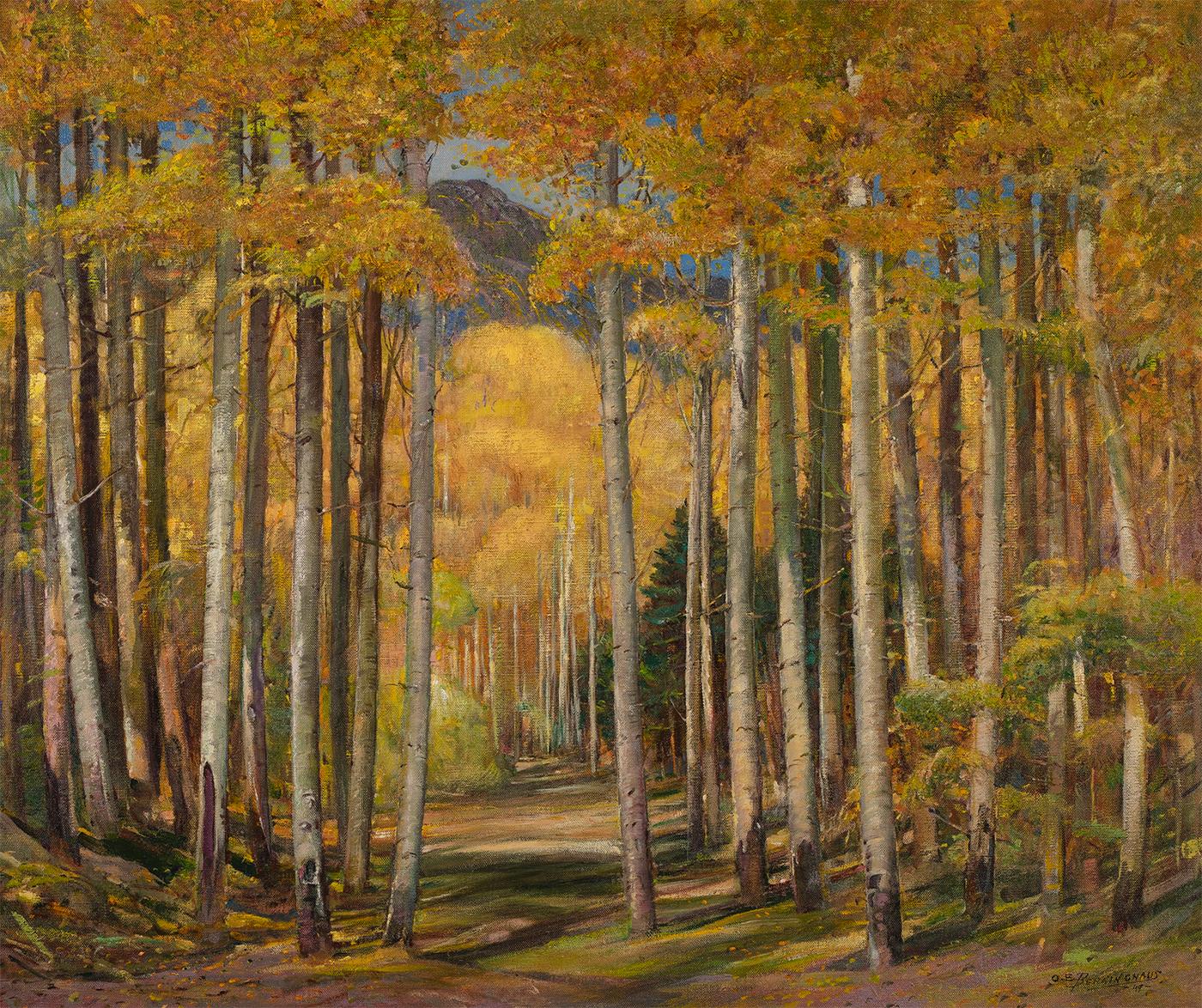Jean KrilleTableau n°45 by Jean Krillé - Oil on cardboard
About the Item
- Creator:Jean Krille (1923 - 2001, Swiss)
- Dimensions:Height: 13 in (33 cm)Width: 16.15 in (41 cm)Depth: 0.4 in (1 cm)
- Medium:
- Movement & Style:
- Period:
- Condition:
- Gallery Location:Geneva, CH
- Reference Number:1stDibs: LU143427345552
Jean Krille
Jean Krille enrolled in the Ecole des Beaux-Arts in Zurich, furthering his studies at the Ecole des Arts in Vevey. His teachers there included the Swiss artist's Max Gubler, who painted in an Expressionist style, and Johannes Itten, who taught at Berlin's legendary Bauhaus. Krille also studied art history at the University of Bern. In 1945, he moved to Paris for five years and studied at the Ecole Nationale Superieure des Beaux-Arts while at the same time mixing with the Saint-Germain existentialists including Prévert, Sartre and Le Corbusier. In this period Krille also studied architecture and became a qualified architect. In 1955, he opened his own architectural office in Geneva, which allowed him, paradoxically, to devote himself to painting. An inveterate traveler, he made several painting trips around the world including several to Africa. Jean Krille exhibited widely and with success throughout Europe and the United States and was the recipient of numerous juried awards and prizes. Displayed in a swept, burnished-gilt frame.
- ShippingRetrieving quote...Ships From: Geneva, Switzerland
- Return PolicyA return for this item may be initiated within 7 days of delivery.
- "La Salute, les Hautes Eaux, Venice" by Claude Sauthier - Oil on wood 53x72 cmLocated in Geneva, CHOil on wood with frame Total size with frame 66x85 cmCategory
1970s Modern Landscape Paintings
MaterialsOil
- Swiss mountain landscape - Oil on canvas 35x62 cmLocated in Geneva, CHOil on canvas sold with frame Total size with frame 48x75 cm Signed E. Galea Della Maddalena Unknown artist from the gallery Original Framed in Geneva Swiss mountainsCategory
Mid-20th Century Modern Landscape Paintings
MaterialsOil
- "Sicile" by Maurice Blanchet - Oil on canvas 46x38 cmLocated in Geneva, CHOil on canvas sold with frame Total size with frame 50x57 cm Maurice BLANCHET is an artist born in Switzerland in 1916 and died in 1978. Artprice lists 7 works by the artist presen...Category
1950s Modern Landscape Paintings
MaterialsOil
- "Corsinge, Geneva" by Albert Charpentier - Oil on canvasLocated in Geneva, CHAlbert Charpentier was born on December 18, 1878 in Paris. A pupil of Jean-Léon Gérôme, Fernand Cormon and Marcel Baschet, he is a genre and portrait painter, member of the Society ...Category
1920s Modern Landscape Paintings
MaterialsOil
- Un pont à Paris by Roberto Gherardi - Oil on wood 43x52 cmBy Roberto GherardiLocated in Geneva, CHWork on wood Frame measures 53x63 cmCategory
20th Century Modern Landscape Paintings
MaterialsOil
- Mouth of Hermance by John Henri Deluc - Oil on canvas 50x61 cmBy John Henri DelucLocated in Geneva, CHJohn Henri DELUC is an artist born in Switzerland in 1868 and died in 1958. His works have been sold at public auction 17 times, mainly in the Paintin...Category
1930s Modern Landscape Paintings
MaterialsOil
- "Cityscape at Dusk"By John Bradley StorrsLocated in Lambertville, NJSigned Lower Right John Bradley Storrs (1885 - 1956) Born and raised in Chicago, John Storrs was a pioneer modernist sculptor known for his precisely executed, solid, non-objectiv...Category
20th Century Modern Landscape Paintings
MaterialsCanvas, Oil
- San Pedro HarborBy Paul SampleLocated in New York, NYIt is infrequent, to say the least, that a diagnosis of tuberculosis proves fortuitous, but that was the event, in 1921, that set Paul Starrett Sample on the road to becoming a professional artist. (The best source for an overview of Sample’s life and oeuvre remains Paul Sample: Painter of the American Scene, exhib. cat., [Hanover, New Hampshire: Hood Museum of Art, 1988] with a detailed and definitive chronology by Sample scholar, Paula F. Glick, and an essay by Robert L. McGrath. It is the source for this essay unless otherwise indicated.) Sample, born in Louisville, Kentucky, in 1896 to a construction engineer and his wife, spent his childhood moving with his family to the various locations that his father’s work took them. By 1911, the family had landed in Glencoe, Illinois, settling long enough for Paul to graduate from New Trier High School in 1916. Sample enrolled at Dartmouth College, in Hanover, New Hampshire, where his interests were anything but academic. His enthusiasms included the football and basketball teams, boxing, pledging at a fraternity, and learning to play the saxophone. After the United States entered World War I, Sample, to his family’s dismay, signed on for the Naval Reserve, leading directly to a hiatus from Dartmouth. In 1918 and 1919, Sample served in the U.S. Merchant Marine where he earned a third mate’s license and seriously contemplated life as a sailor. Acceding to parental pressure, he returned to Dartmouth, graduating in 1921. Sample’s undergraduate life revolved around sports and a jazz band he formed with his brother, Donald, two years younger and also a Dartmouth student. In November 1933, Sample summarized his life in a letter he wrote introducing himself to Frederick Newlin Price, founder of Ferargil Galleries, who would become his New York art dealer. The artist characterized his undergraduate years as spent “wasting my time intensively.” He told Price that that “I took an art appreciation course and slept thru it every day” (Ferargil Galleries Records, circa 1900–63, Archives of American Art, Smithsonian Institution, available on line). In 1920, Donald Sample contracted tuberculosis. He went for treatment to the world-famous Trudeau Sanitorium at Saranac Lake, in New York State’s Adirondack Mountains for the prescribed regimen of rest, healthful food, and fresh air. Visiting his brother in 1921, Paul also contracted the disease. Tuberculosis is highly contagious, and had no certain cure before the development of streptomycin in 1946. Even for patients who appeared to have recovered, there was a significant rate of recurrence. Thus, in his letter to Price, Sample avoided the stigma conjured by naming the disease, but wrote “I had a relapse with a bad lung and spent the next four years hospitalized in Saranac Lake.” The stringent physical restrictions imposed by adherence to “the cure” required Sample to cultivate an alternate set of interests. He read voraciously and, at the suggestion of his physician, contacted the husband of a fellow patient for instruction in art. That artist, then living in Saranac, was Jonas Lie (1880–1940), a prominent Norwegian-American painter and an associate academician at the National Academy of Design. Lie had gained renown for his dramatic 1913 series of paintings documenting the construction of the Panama Canal (The Metropolitan Museum of Art, New York; United States Military Academy, West Point, New York). Primarily a landscape artist, Lie had a particular affinity for scenes with water. His paintings, impressionistic, atmospheric, and brushy, never strayed from a realistic rendering of his subject. Sample regarded Lie as a mentor and retained a lifelong reverence for his teacher. Sample’s early paintings very much reflect Lie’s influence. ` In 1925, “cured,” Sample left Saranac Lake for what proved to be a brief stay in New York City, where his veteran’s benefits financed a commercial art course. The family, however, had moved to California, in the futile hope that the climate would benefit Donald. Sample joined them and after Donald’s death, remained in California, taking classes at the Otis Art Institute in Los Angeles. In Sample’s account to Price, “I couldn’t stomach the practice of painting a lot of High Sierras and desert flowers which seemed to be the only kind of pictures that were sold here so I got a job teaching drawing and painting at the art school of the University of Southern California.” Initially hired as a part-time instructor, Sample progressed to full-time status and ultimately, by the mid-1930s, to the post of Chairman of the Fine Art Department. Sample, however, did not want to wind up as a professor. “Teaching is all right in small doses,” he wrote, “but I have a horror of drifting into being a college professor and nothing more.” At the same time as he taught, Sample began to exhibit his work in a variety of venues at first locally, then nationally. Though he confessed himself “a terrible salesman,” and though occupied with continued learning and teaching, Sample was nonetheless, ambitious. In 1927, he wrote in his diary, “I am eventually going to be a painter and a damned good one. And what is more, I am going to make money at it” (as quoted by Glick, p. 15). In 1928, Sample felt sufficiently solvent to marry his long-time love, Sylvia Howland, who had also been a patient at Saranac Lake. The Howland family were rooted New Englanders and in summertime the Samples regularly traveled East for family reunion vacations. While the 1930s brought serious hardship to many artists, for Paul Sample it was a decade of success. Buttressed by the financial safety net of his teacher’s salary, he painted realist depictions of the American scene. While his work addressed depression-era conditions with a sympathetic eye, Sample avoided the anger and tinge of bitterness that characterized much contemporary realist art. Beginning in 1930, Sample began to exhibit regularly in juried exhibitions at important national venues, garnering prizes along the way. In 1930, Inner Harbor won an honorable mention in the Annual Exhibition of the Art Institute of Chicago. That same year Sample was also represented in a show at the Albright-Knox Gallery in Buffalo and at the Biennial Exhibition of the Corcoran Gallery of Art, Washington, D.C. In 1931, Dairy Ranch won the second Hallgarten Prize at the Annual Exhibition of the National Academy of Design, in New York. Sample also made his first appearances at the Carnegie Institute, Pittsburgh, and The Pennsylvania Academy of the Fine Arts, Philadelphia. In 1936, Miner’s Resting won the Temple Gold Medal at the Pennsylvania Academy’s Annual Exhibition. Always interested in watercolor, in 1936, Sample began to send works on paper to exhibitions at the Whitney Museum, New York. While participating in juried exhibitions, Sample also cultivated commercial possibilities. His first New York art dealer was the prestigious Macbeth Gallery in New York, which included his work in a November 1931 exhibition. In 1934, Sample joined the Ferargil Galleries in New York, after Fred Price arranged the sale of Sample’s Church Supper to the Michele and Donald D’Amour Museum of Fine Arts in Springfield, Massachusetts. In 1937, The Metropolitan Museum of Art purchased Sample’s Janitor’s Holiday from the annual exhibition of the National Academy of Design, a notable honor. As prestigious as this exhibition schedule may have been, by far Sample’s most visible presence in the 1930s and 1940s was the result of his relationship with Henry Luce’s burgeoning publishing empire, Time, Inc. Sample’s first contribution to a Luce publication appears to have been another San Pedro...Category
20th Century American Modern Landscape Paintings
MaterialsCanvas, Oil
- Picking the Olives by REUVEN RUBIN - 20th century art, oil paintingBy Reuven RubinLocated in London, GBPicking the Olives by REUVEN RUBIN (1893-1947) Oil on canvas 65 x 81 cm (24 ¾ x 31 ½ inches) Signed Executed circa 1940Category
20th Century Modern Landscape Paintings
MaterialsOil
- Winter on the FarmBy Dale NicholsLocated in New York, NYSigned and dated lower left: DALE NICHOLS ∙ 1961Category
20th Century American Modern Landscape Paintings
MaterialsOil
- The Weathered BarnBy Luigi LucioniLocated in New York, NYSigned and dated lower left: L Lucioni 1947Category
20th Century American Modern Landscape Paintings
MaterialsOil
- Autumn Aspen ForestBy Oscar Edmund BerninghausLocated in New York, NYSigned and dated lower right: O.E. BERNINGHAUS. / –49–Category
20th Century American Modern Landscape Paintings
MaterialsOil






